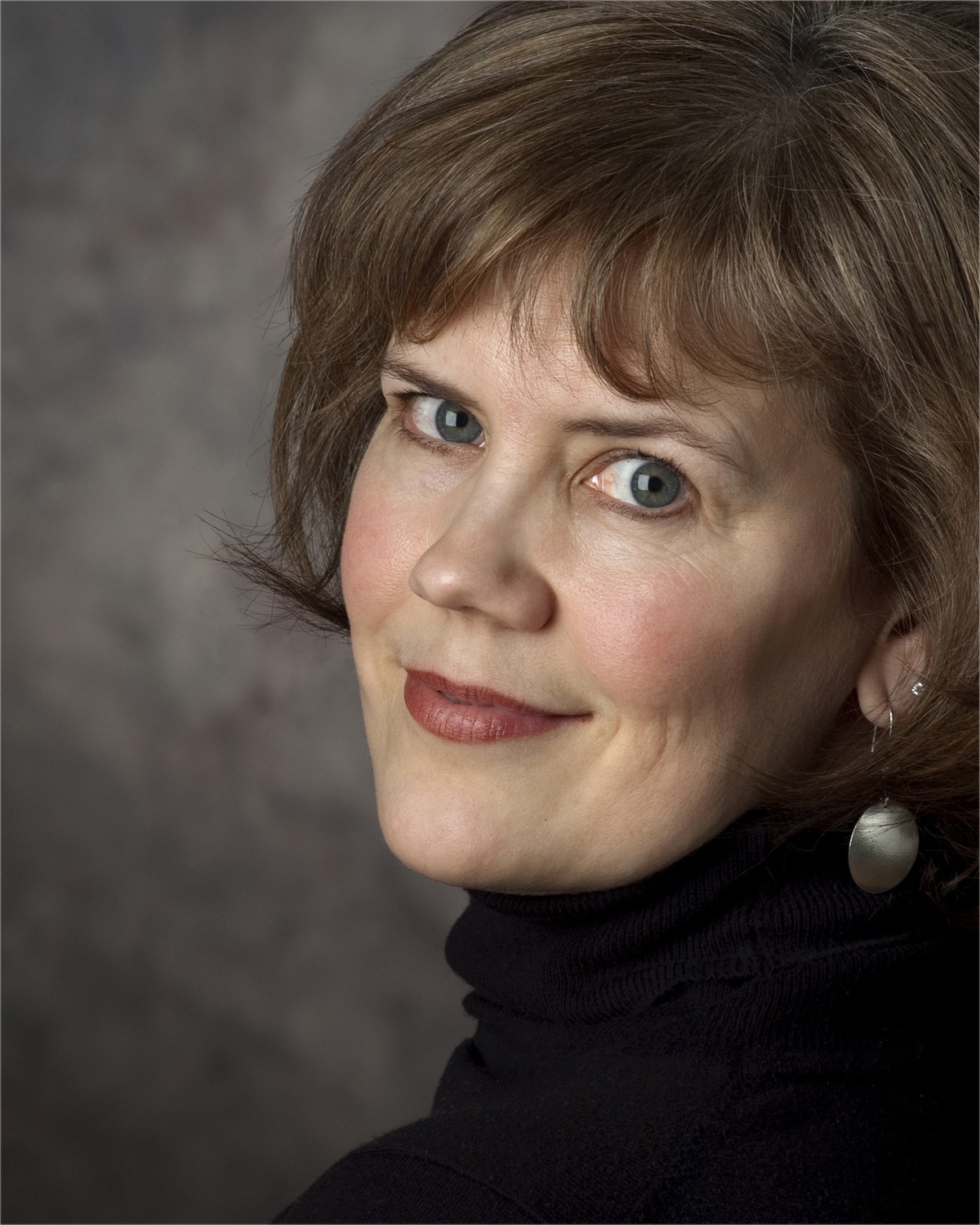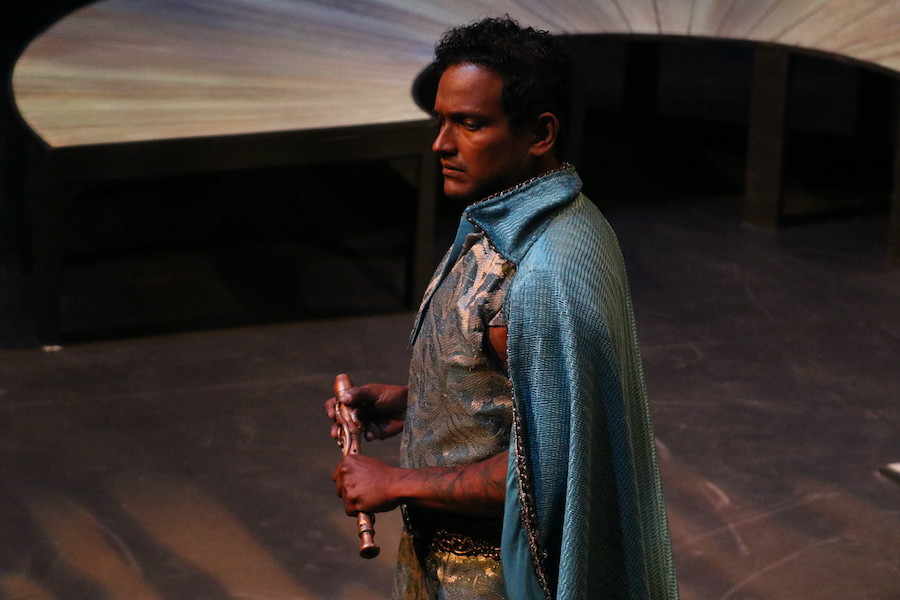The Little Opera Company closed its 2022/23 season with a bite-sized version of Mozart’s great singspiel, Die Zauberflöte, featuring Canadian composer John Greer’s compact, 90-minute adaptation titled The Magic Flute: The Trials of Tamino and Pamina performed in English.
The three-performance run held at the Manitoba Theatre for Young People and stage directed by Winnipeg’s Rob Herriot—one of the province’s busiest directors this season, still fresh off directing two back-to-back Manitoba Opera productions —featured the Manitoba debut of two fine artists in the title roles: Sri Lankan tenor Asitha Tennekoon as Prince Tamino; and Canadian soprano Nicole Leung appearing as Pamina.
First staged by the LOC in its initial incarnation in 2008, the Winnipeg-born Greer worked his own magic in essentially cutting the typically three-hour opera in half, with this latest version created especially for the LOC last year. The Queen of the Night—oddly missing-in-action 15 years ago – with her showstopper second aria, “Der Hölle Rache kocht in meinem Herzen” (The Rage of Hell) then assumed by the First Lady—has thankfully been reinstated, as well as high priest Sarastro.
The Toronto, ON-based composer also fine-tuned Emanuel Schikaneder’s original libretto to cull its inherent sexist and racist overtones, thus creating a more palatable production for these changing times, with its briskly paced narrative flowing sans intermission. It’s a testament to Greer’s sensitive artistry that other choices, such as eliminating the chorus and slave chief Monostatos, as well as conflating the three child spirits with the Three Ladies (albeit are still paid lip service by Papageno), feel organic within the greater whole.
As the chief protagonist, Tennekoon, who has also appeared with the Canadian Opera Company, Opera Kelowna, Edmonton Opera, and Opéra de Montréal, infused his role with requisite nobility; navigating his large leaps during Act I’s “Dies Bildnis ist bezaubernd schön” (This portrait is beautiful) with his tenor voice as silky smooth as his princely attire. His animated delivery (however still slightly lonely, without the usual gathered assembly of enchanted animals) of “Wie stark ist nicht dein Zauberton” (How strong is thy magic tone) sung with his magic flute did not disappoint.
Leung, currently a McPhee Artist at Calgary Opera as well as Yale School of Music gradate, broke our hearts during her “big” aria, Act II’s “Ach, ich fühl’s, es ist verschwunden” (Oh, I feel it, it is gone), sung in utter despair after a silent Tamino rebuffs her during Sarastro’s first trial of wisdom. Her natural warmth matched equally by innate lyricism made this an evening highlight.
Two pillars of the local singing community and frequent LOC artists, soprano Margot Harding and mezzo-soprano Donnalynn Grills both notably appeared in the 2008 production, thus providing a thread of continuity to the past.
Harding, who marked her professional role debut of the Queen of the Night with the Salzburg Opera years ago, reprised her pair of fiendishly difficult arias as the “star-blazing” royal. She tossed off “O zittre nicht” (Oh, tremble not) with aplomb, including its colouratura passages with their popping high F’s as if she’s done it all her life. Her fiery performance of “Der Holle Rache kocht” similarly compelled; at its dramatic best when paradoxically sung directly to her trembling daughter Pamina, rather that outwards to the audience that highlighted their power differential.
Grills also infused her role of Third Lady with gravitas, providing ballast to her cohorts, with her strong vocals underpinning their tightly knit harmonies during their first trio, “Stirb, Ungeheuer, durch uns’re Macht!” (Die, monster, by our might!). Mezzo-soprano Geneva Halverson as the Second Lady equally brought dramatic intensity to the stage with every note and withering glare; the singer’s penetrating vocals always fully in command.
Two non-negotiable characters in any adaptation will always be Papageno and his feathered love, Papagena. Atlantic Canadian bass-baritone Branden Olsen hatched a playful “child of nature” as the beloved bird-catcher, his robust vocals exuding confidence. Mexico-born soprano Paulina Gonzalez likewise created a joyful Papagena, joining her soon-to-be-betrothed in a goofy mating dance in which they cluck and strut while declaring their undying love during Act II’s duet “Pa-Pa-Pa-Papageno.”
In what is ostensibly now a chamber opera, every role becomes even more critical. Bass Stephen Haiko-Pena boomed his way through his role as Sarastro, as did tenor Kyle Briscoe as the Speaker, rounded out by bass-baritone Don Larsen’s High Priest.
Music director/pianist Shannon Hiebert led a 12-piece orchestra, skillfully cuing players while also crisply doubling as the celesta player for Papageno’s magical bells, with several pesky balance issues not marring the overall performance.
A deliciously stylized serpent (dancer Rebecca Sawdon, performing Odette Heyn’s slithery choreography) at the top of the show ushered the opening night crowd into the opera’s fantastical realm. We did have a few puffs of stage smoke, however more would have been welcomed. Robert Butler’s highly detailed costumes provided eye candy (albeit the Queen’s near-identical gown as the Ladies appeared curiously understated), as did set designer Kate George’s swooping ramps creating effective sight lines in the intimate venue, surrounding a large orb evoking a sun or moon. Minimalist tree trunks (also a missed opportunity by not arranging the trunks into sets of threes, reflecting the opera’s fundamentally Masonic roots) were moved strategically to conjure garden groves and temples, with this latest, audience-friendly production’s eternal theme extolling the triumph of goodness over adversity never growing old.
Related Content ⬇
Opera Canada depends on the generous contributions of its supporters to bring readers outstanding, in-depth coverage of opera in Canada and beyond. Please consider subscribing or donating today.

Holly Harris has served as an opera, classical music, dance and theatre critic for over 20 years, including having written for Opera Canada since 2009. A Prairie girl at heart, her reviews and articles have also appeared in the Winnipeg Free Press, Ludwig van Toronto, Musicworks, Opera Today, Classical Voice North America, Dance International, The Dance Current, Symphony, and The Strad.










